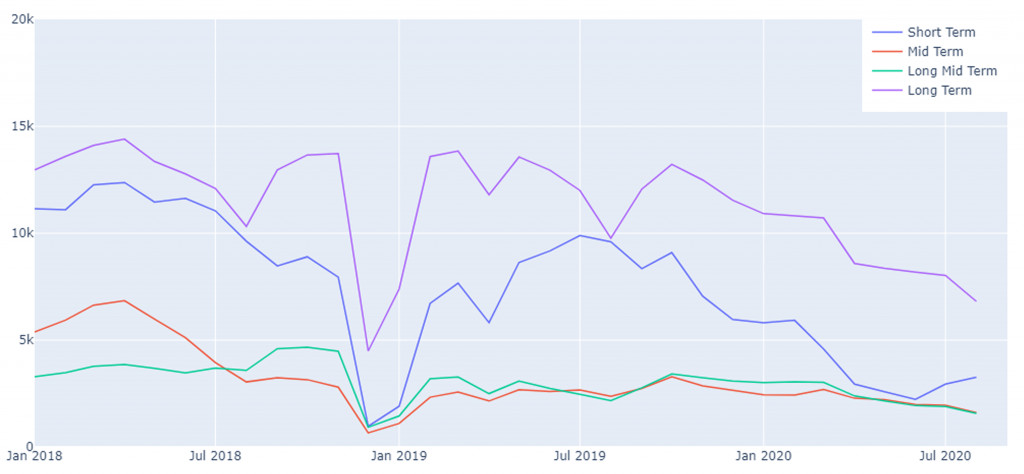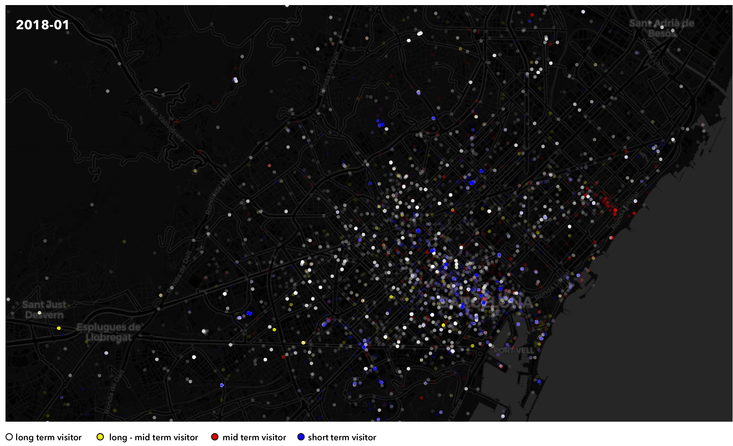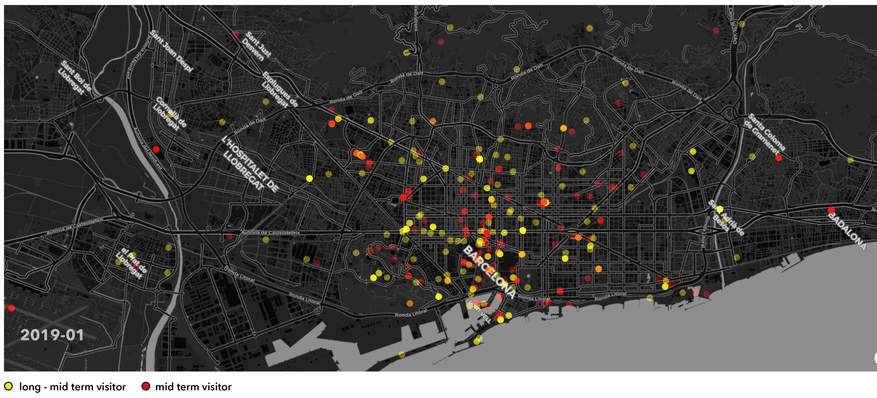This project is one of the analysis studies of our studio project, which is carried out with the content of Tourism as a Service, where, in general, the tourist movements in Barcelona are taken into account together with the social, administrative and economic discussions caused by them.
As per the project, we took the role of Airbnb, one of the most important playmakers of the touristic housing market as a global platform. Being aware of the fact that tourism is a topic that has been always seen as problematic and open to discussion, we do not want this overtourism – congestion or overcrowding from an excess of tourists resulting in conflicts with locals – to be seen as a series of problems created by our platform and we are advancing the project in this direction. For this reason, we question what kind of policies global platforms can produce and what can be their role in the policy making processes.
With the awareness that Barcelona is one of the global touristic destinations and that the tourism sector will inevitably continue to be one of the much-discussed issues on the agenda, in our project we are re-categorizing these tourists, as we know them, and thus their mobility. Leaving the term “tourist” aside; we call them as short, mid, long-mid or long term visitors based on their minimum and maximum stay in the city. The new classification has been defined as follows:
- Less than one month stay: Short Term Visitor
- Between one month to six months: Mid Term Visitor
- Between six months to one year: Long-Mid Term Visitor
- And more than one year stay: Long Term Visitor

In our analysis, we used three years of Twitter data provided by our studio professor, Luis Falcon. The pre-process begins with all available data, which is provided monthly during 3 years. And we apply some filter to eliminate unreliable registers, such as the thousands of tweets by the Twitter bots. And finally left us three hundred twenty thousand unique IDs. Since the classification is based on their stay in the city, we applied time delta function for every unique ID, taking the date of their latest and first tweets in the city.

Filtering and Classification
Initial analysis shows that 70 percent short term visitors who stay less than 1 month that represents the dynamism of short term visitors in the city. Even if short term visitors are never higher in number, at any moment, compared to the long termers, for example, day are really dynamic. In order to see the comparable numbers, line plot has been chosen as a way of visualisation. With this, proportion of each profile became much more visible and led us to continue with the geolocated tweets from each profile.

Number of Tourists – 3 Years
As the next step in our analysis, we continue with the scale based observations using one million geolocated tweets. With the geolocated ones, on an urban scale, we can clearly see that short and long term visitors are mostly concentrated in coastal districts and through Eixample. On the other hand, we cannot follow the tweets that we see as red and yellow, which show the mobility of mid and long mid-term visitors. It demonstrate that, for mid term visitors, Barcelona is not as attractive as it is for the short term visitors.

Movement of Different Profiles in the City – 3 Years
When the scale of the analysis is narrowed down, when examining only the mid and long-mid term visitors in 2019, which are the focus of the project, their movement becomes much more clearer compared to the previous scale. Mid and long-mid visitors could not be followed when we looked them together with the other two types because they are very few in number compared to the others. In addition, they are spread over a large part of the city, not only at touristic destinations like short term visitors.

Movement of Mid-Term Visitors – 2019
As a result, this analysis helped us to construct a new classification for tourists’ profiles on rational foundations in the policy making processes where we are conducting to change the ongoing definition of “tourists”. With the help of geolocated data, it became possible to see the areas where each profile has been concentrated and/or spread. In the next steps, it has been aimed to narrow the scale and focus only on these concentrated areas/districts in order to define the behaviours of each profile after we classify them.
RECLASSIFYING TOURISTS’ PROFILE is a project of IAAC, Institute for Advanced Architecture of Catalonia developed at Master in City & Technology in 2020/21 by student: Adriana Aguirre Such, Aishath Nadh Ha Naseer, Arina Novikova and Sinay Coskun and faculty: Diego Pajarito.